Reopening at San Antonio Botanical Garden, part 2
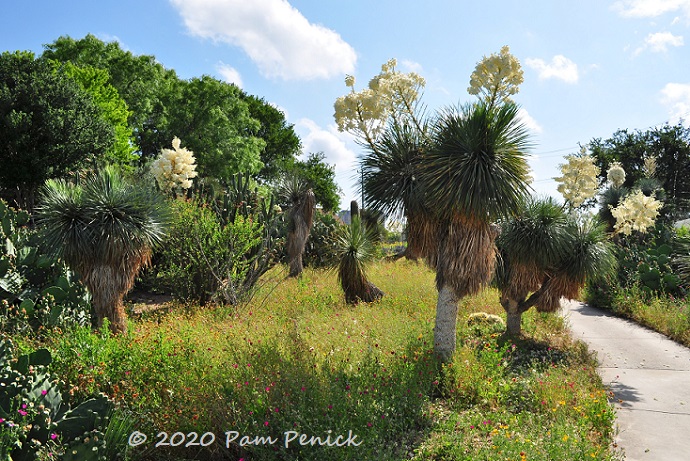
A wildflower meadow studded with Yucca rostrata in bloom — yes, please! Let’s continue with last week’s visit to San Antonio Botanic Garden and this path into the cactus and succulent garden.
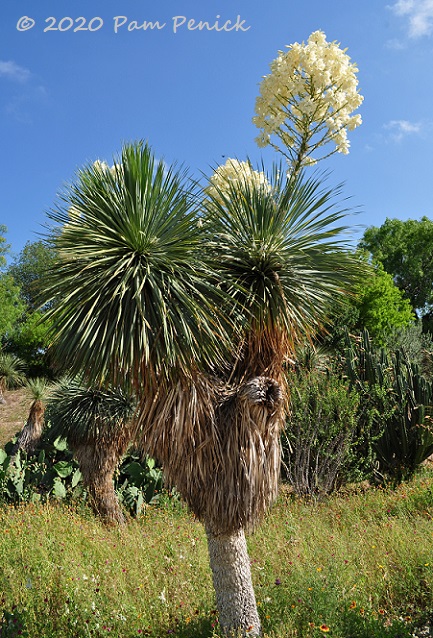
More flowering yuccas!
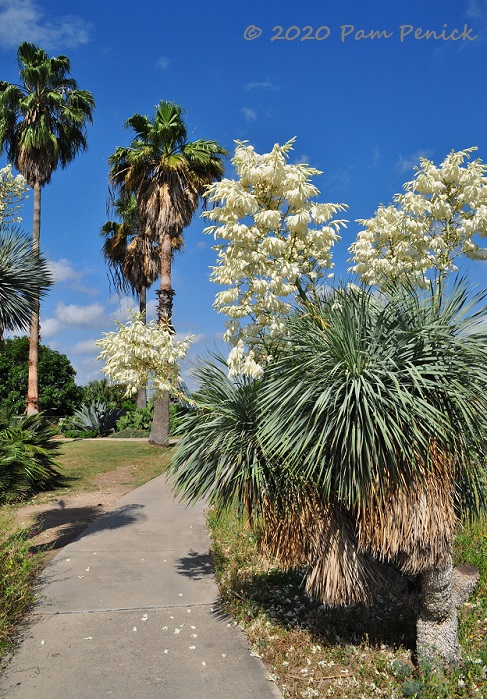
And more, with shiny-leaved palm trees and a blue, blue sky.
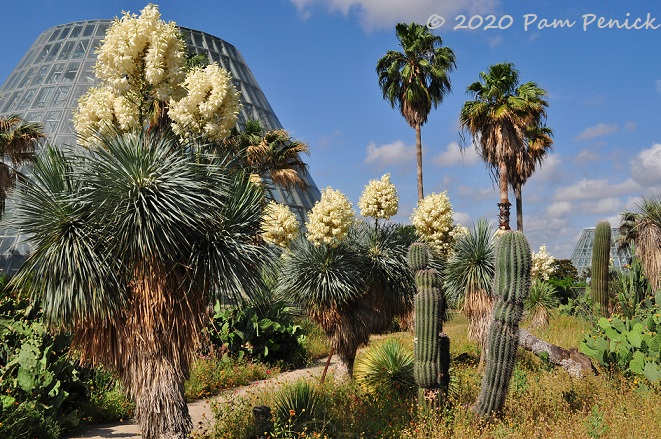
And a space-age-looking glasshouse and columnar cacti.
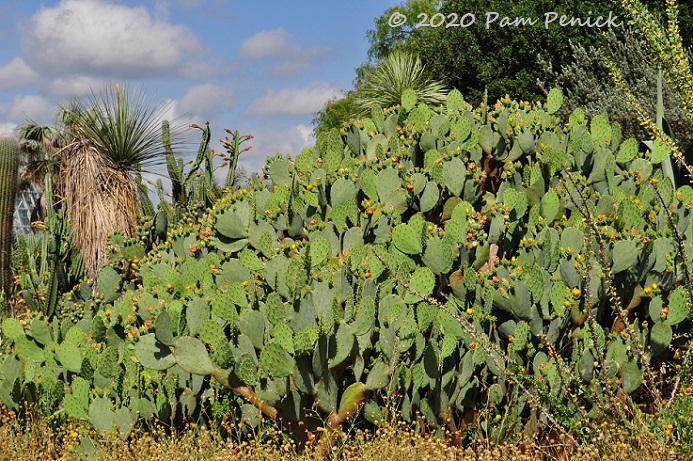
Check out this inclined ramp of prickly pear, beringed with orange flower buds — love!
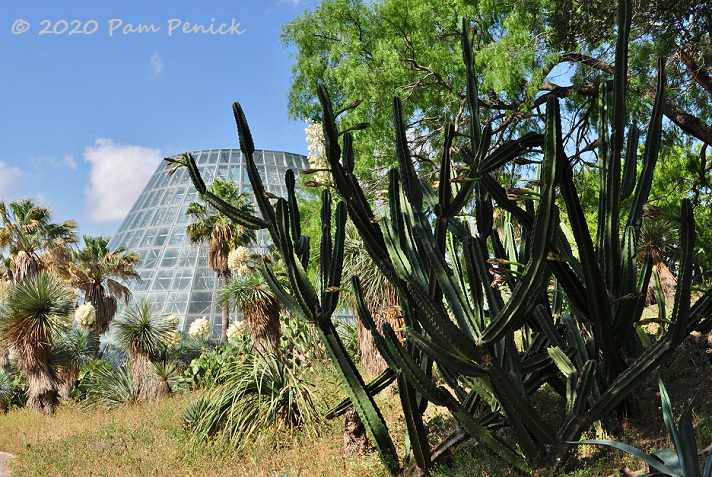
I don’t know what kind of cactus this is, but I like its shadowy, segmented form against the bright background of glasshouse, palms, and yuccas.
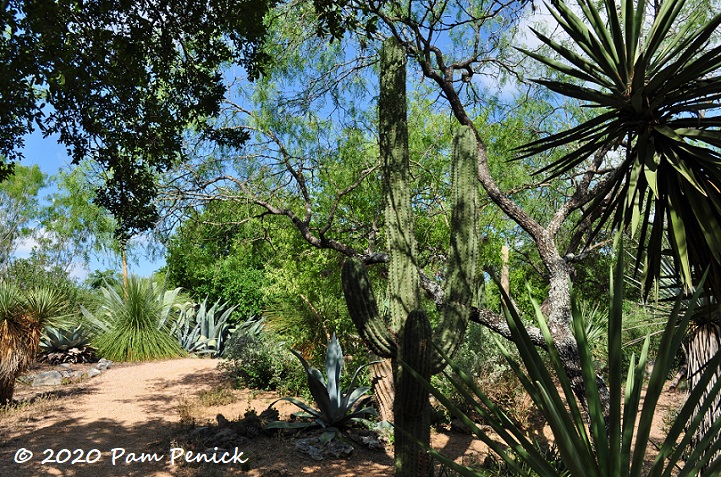
Even cacti appreciate filtered shade in a Texas summer.
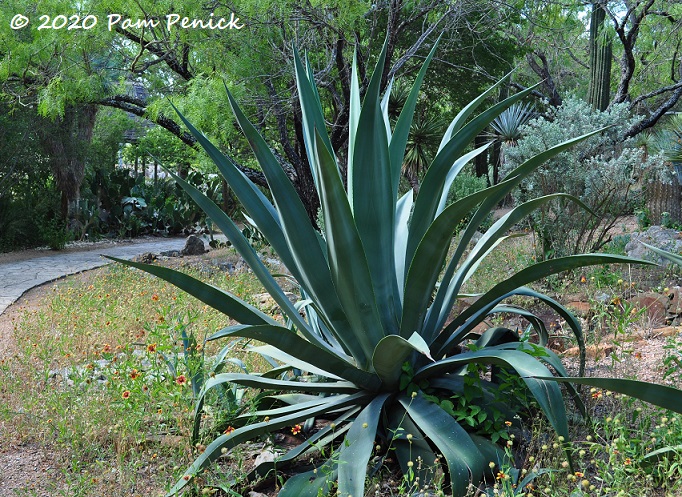
Agave in a fading verge of wildflowers
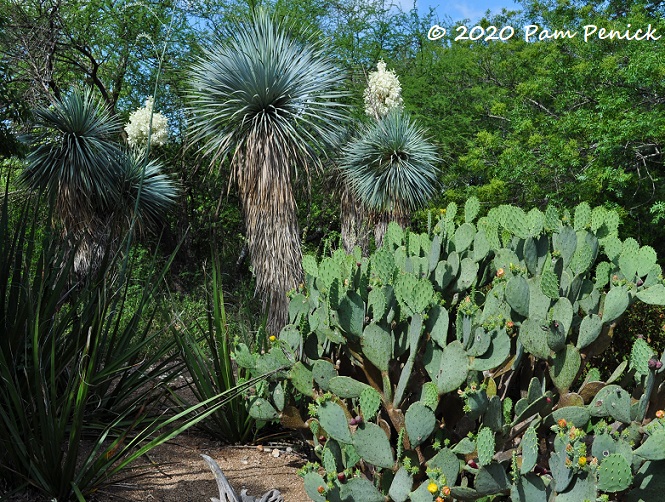
Yucca rostrata in bloom with prickly pear and giant hesperaloe
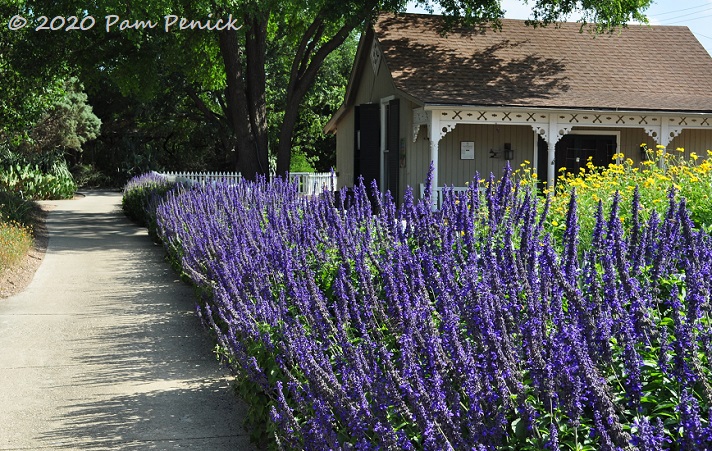
Bees were thrumming in this violet salvia border.
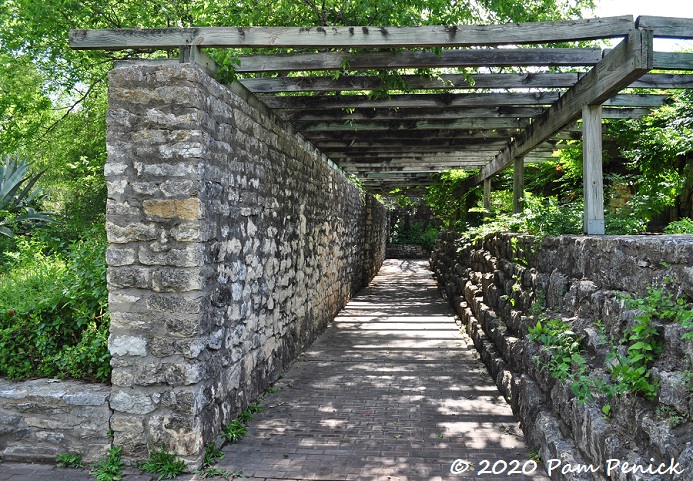
An arbor-shaded path
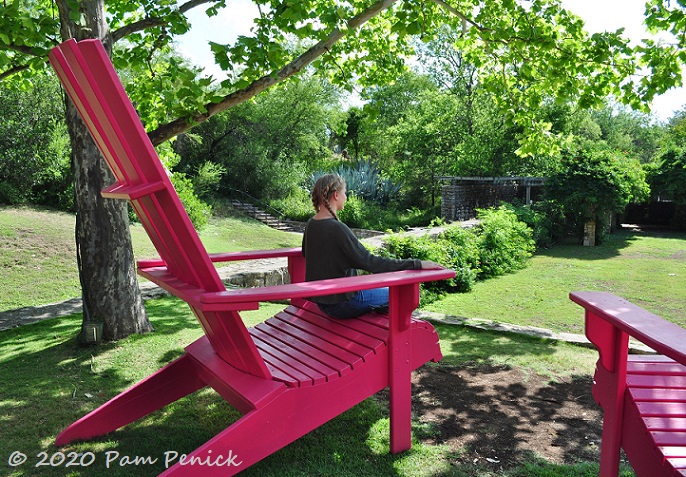
Overlooking a grassy amphitheater, we discovered gigantic, cherry-red Adirondacks. Naturally we had to try them out.
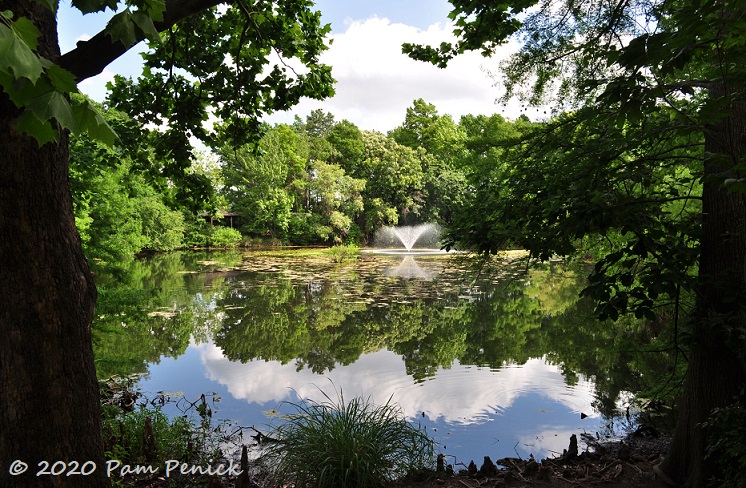
Along the Texas Native Trail at the rear of the garden, we took the middle path around a large pond ringed by bald cypresses and sycamores.
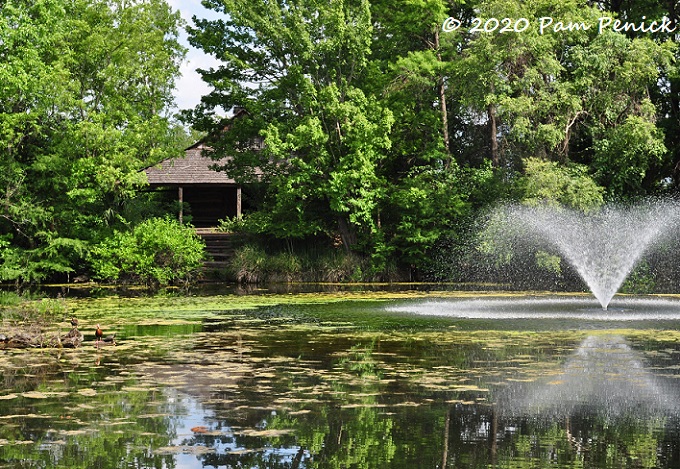
A spraying fountain disturbed the illusion of naturalness.
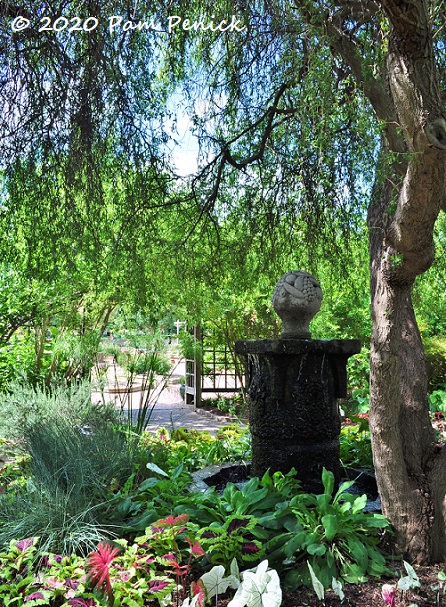
Heading back to the main gardens, we stopped to enjoy the dappled shade of a willow overhanging a columnar fountain. I ignored the rose garden ghetto just beyond, having never learned to appreciate a traditional rose display. My teenage companion, however, was scandalized by my rose dis.
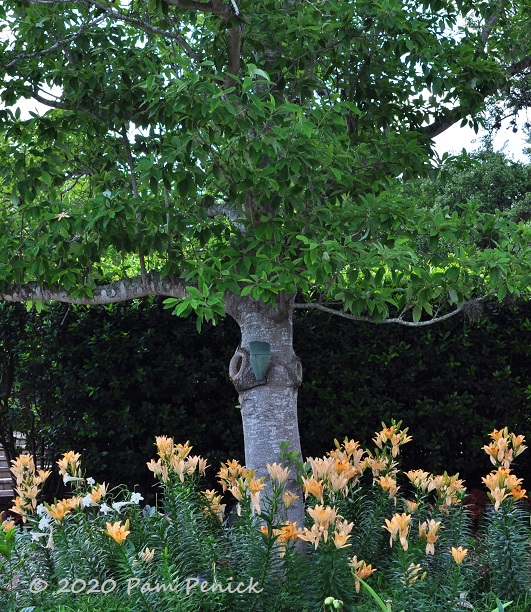
Apricot lilies matted by a dark-green hedge merit a photo, though!
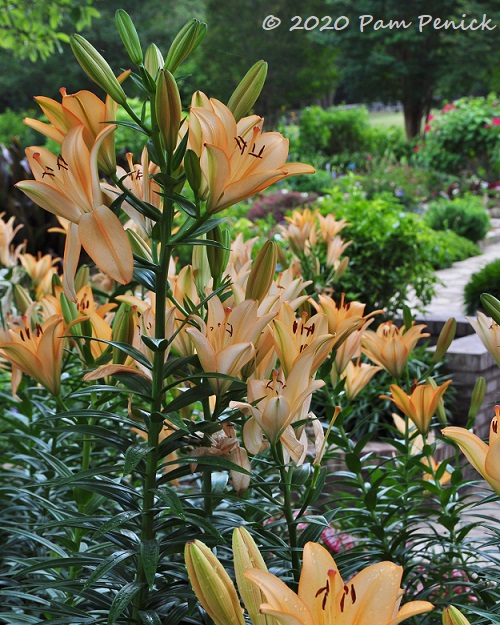
Lovely
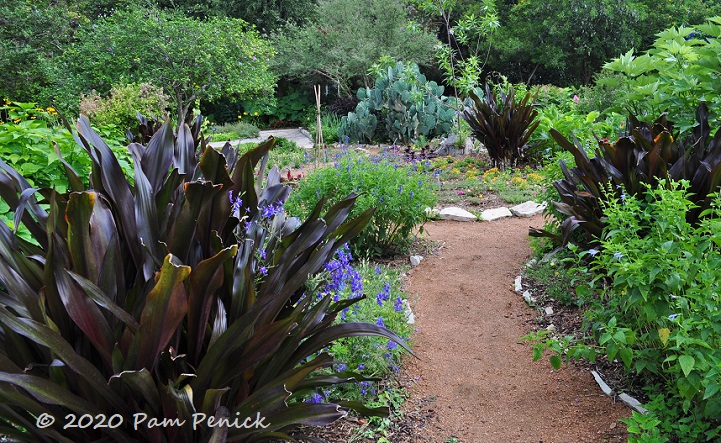
In the Old-Fashioned Garden, much of it is just getting going, replanted perhaps for summer. Are the dark-leaved plants giant crinum lilies?
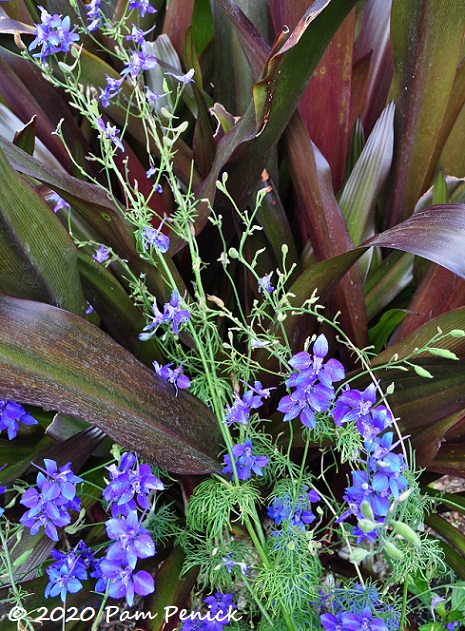
Purple larkspur leans into the broad, glossy leaves of the mystery plant/crinum.
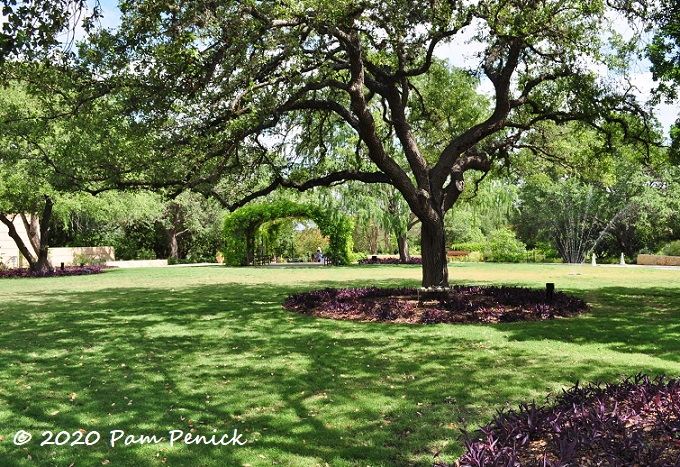
This great lawn is new since I was last here, offering a green event space where once was a Spanish-style channel fountain. Purple heart encircles the shade trees.
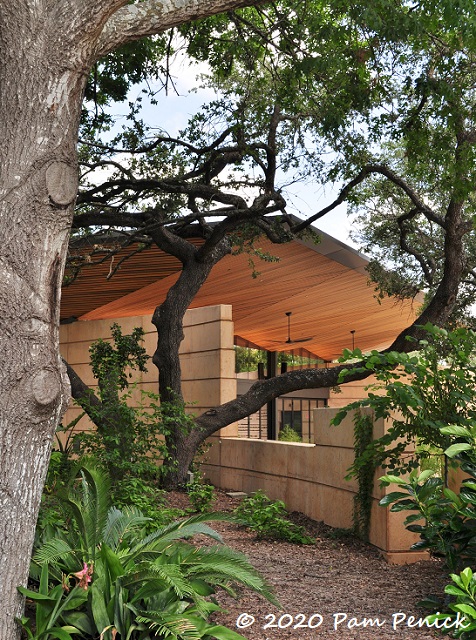
A light-filled building, the Betty Kelso event center, is also new.
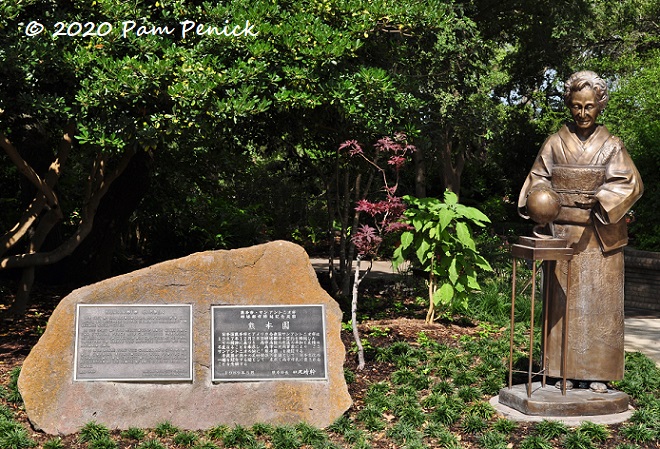
Nearby, the entrance to the Japanese garden is marked by a statue of a kimono-wearing woman.
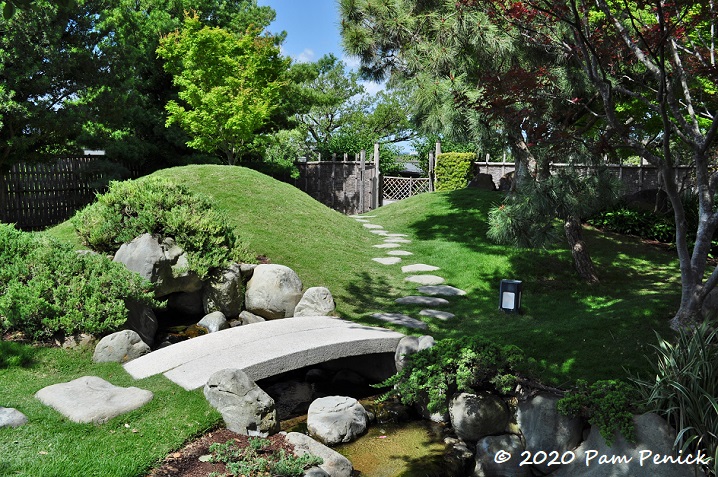
“A gift to San Antonio in 1989 by its sister city, Kumamoto, the Kumamoto En (En means garden in Japanese) is an authentic Japanese Garden designed by landscape artists and craftsmen from Japan. In exchange, San Antonio gave Kumamoto a log cabin from the Hill Country town of Fredericksburg.”
https://www.sabot.org/explore/featured-attractions/
I love the notion that there’s a Texas log cabin somewhere in Kumamoto, Japan.
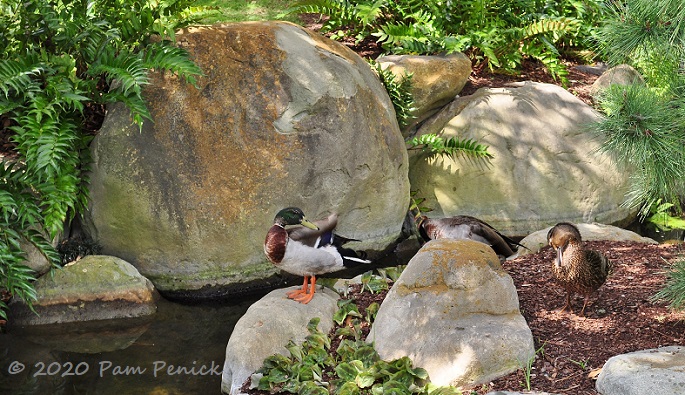
The garden’s pond “symbolizes the Pacific Ocean that separates the East and West,” according to the website. Ducks groom themselves amid round boulders anchoring the pond’s edge.
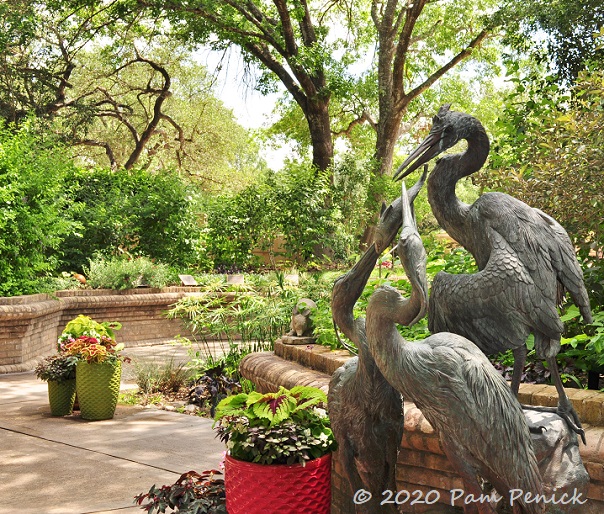
The Sensory Garden is elevated in raised beds, perhaps for ease of smelling and touching plants. This garden has always seemed a little out of place to me.
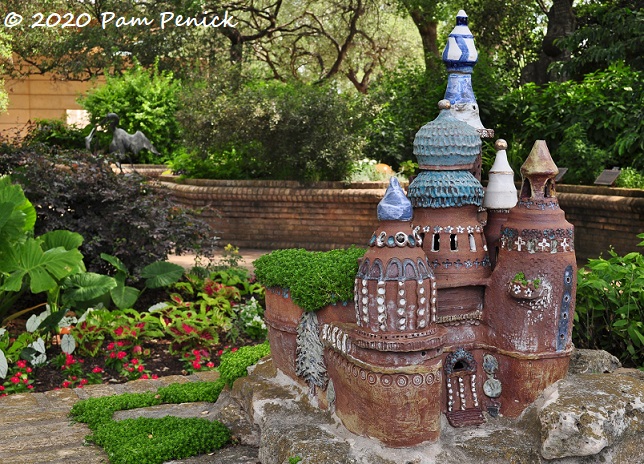
A quirky, clay-sculpture castle adorns one end of the garden.
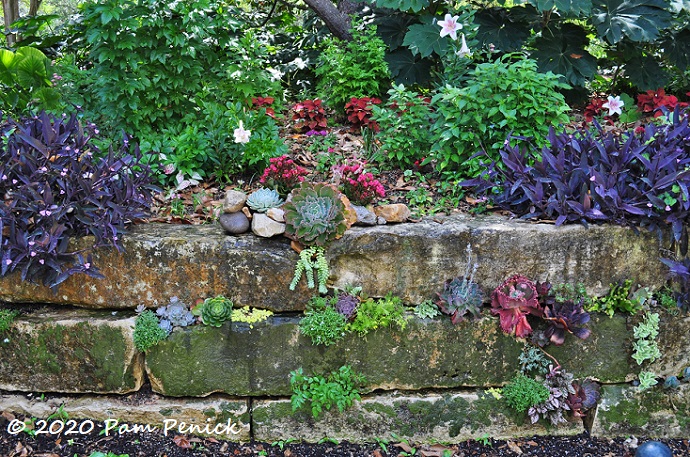
Moving on, a stone retaining wall has been transformed into a vertical display of succulents.
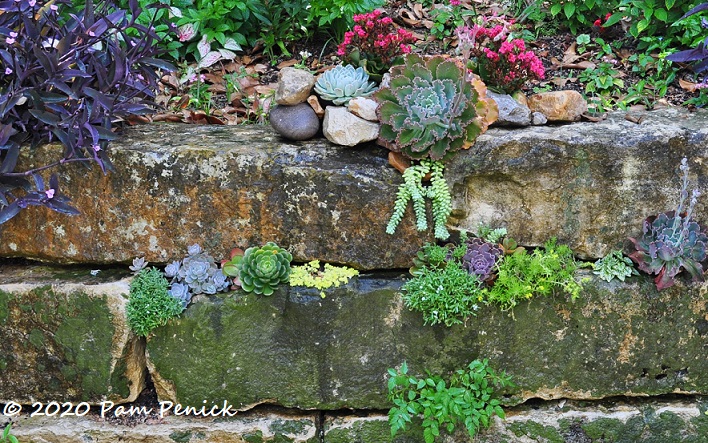
Tucked into crevices, succulents brighten the wall with ruffled leaves and pastel colors.
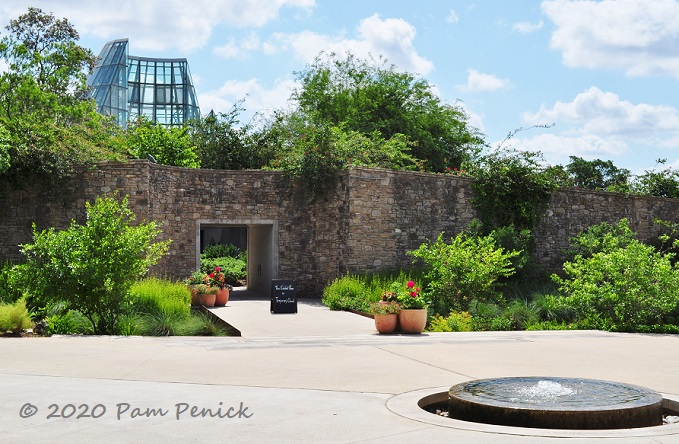
SABG is always a fun destination for day-tripping from Austin. I’m glad to have had the opportunity to do so again thanks to their new reservation system and restricted entry, open to members and non-members alike.
For a look back at Part 1 of my visit to San Antonio Botanical Garden, click here.
__________________________
Digging Deeper
Come learn about gardening and design at Garden Spark! I organize in-person talks by inspiring designers, landscape architects, authors, and gardeners a few times a year in Austin. These are limited-attendance events that sell out quickly, so join the Garden Spark email list to be notified in advance; simply click this link and ask to be added. Season 8 kicks off in fall 2024. Stay tuned for more info!
All material © 2025 by Pam Penick for Digging. Unauthorized reproduction prohibited.


I too find traditional rose ghettos boring
They’re the worst. I much prefer roses planted amid other shrubs and perennials.
Pam,
I wonder if the crinum is really a Phormium/New Zealand flax? They seem to come in all sizes. I bought one once thinking it was the smaller one and then after reading the tag at home I realized it would be a giant and never did find a place that I thought it would fit in.
At first I thought they might be phormiums, but they grow poorly in our sauna-like summers. But maybe? I’m not very familiar with either phormium or giant crinum, to be honest.
I agree with you about rose ghettos. Roses belong with other plants. And I am extremely distressed that they replaced the Andalucian acequia/fountain with a lawn! Otherwise, a nice photo visit to a great botanical garden. Thanks!
It was a lovely fountain, Peter. I miss it too. But I see the rationale for an event lawn, since botanical gardens get so much of their funding from party rentals. Next I would like to see them redo the sensory garden into something more exciting.
Maybe they could reinstall the acequia/fountain feature there?
Lovely post! ‘Do you happen to know the name of the purple salvia?
Thanks
Kim
Thanks, Kim. I didn’t see a label for the salvia. It looks kind of like ‘May Night’ to me.
I must say if there was a part of a big garden I would skip it would be the rose garden. ha…
I would also have to hop onto one of those big chairs. If I had an estate I would have one of those in the garden. They make me smile even when not sitting in it.
The wall with succulents. I have been thinking about doing that to my little short wall. It has big holes I could easily do this. The last time I tried squirrels or rabbits thought I made a salad bar for them. After seeing this wall I think I will give it a go.
Love that clay castle and those lilies.
You should make a succulent wall, Lisa. It would be a fun experiment. Darn those squirrels or rabbits though.
Is the sensory garden not intended to kindly serve plant people who are in wheelchairs, or blind?
Kirstenbosch has a similar space with scented plants. And a Braille Trail with a rope railing to follow.
The sensory garden was, in fact, originally called the Garden for the Blind and contained plants meant to be touched and smelled. It’s a great concept, but visually this garden looks outdated. The raised beds are tall and angular, and it doesn’t seem particularly accessible for wheelchair users. I don’t recall any braille signage either. It just seems ripe for a redesign to bring it up to the level of the new family and edible/cooking gardens.
I’m originally from Minnesota. In addition to thousands of lakes, there are many, many swamps. On some estates, there are fountains out in the middle of their swamps. I don’t know for sure, but “they” say it lessens the algae growth/keeps an open water area.
I can see that being the case. I don’t love the aesthetics of the one at SABG, but perhaps it’s there for another reason.
Your photos are always lovely – and the post reminds me how I have not been to SABG in years. Thanks for the virtual “day trip” in this time of isolating!
It’s my pleasure, Nancy. Thanks for reading and commenting!